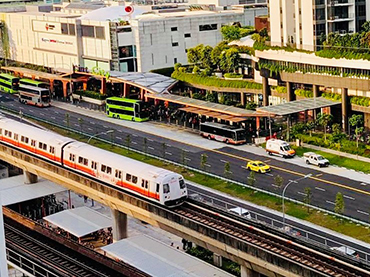Written Reply by Minister for Transport Ong Ye Kung to Parliamentary Question on Incentive Programmes Offered to Public Transport Companies for Reliability
10 May 2021In Parliament
Mr Dennis Tan Lip Fong asked the Minister for Transport
a. what incentives are offered to public transport companies for reliability;
b. how long these incentive programmes have been in place; and
c. how much incentives have been given over the past five years, broken down by companies and amounts.
Reply by Minister for Transport Ong Ye Kung:
1. Since 2011, LTA has been working with rail operators to enhance their maintenance regime. Everyone played their part. LTA upgraded rail operating assets such as signalling and power systems, and invested in infrastructure, such as the simulation centres to test signalling systems, back up operation control centres, and now the Integrated Train Testing Centre.
2. The operators have put in place a higher maintenance tempo and over time, made a significant shift to more preventive instead of corrective maintenance. They increased the frequency of inspections, used sensors to troubleshoot, invested in digitalisation, and are replacing components more frequently.
3. As a result, reliability of train services improved over the years. But so did maintenance cost. In train-km terms, reliability increased by ten times over the past six years. While overall this is a good development, especially from the point of view of the commuter, it raises issues concerning the financial sustainability of the rail network as the operators will make huge losses.
4. The Government therefore decided to enhance our subsidy for rail operations. But instead of an outright subsidy, we devised an incentive system called the Rail Reliability Incentive (RRI), a temporary grant from 2020 to 2023.
5. Rail operators are held to a set of performance standards on both the operation and the maintenance of the rail system. LTA may impose financial penalties if there is a breach of these requirements.
6. Conversely, if operators can meet the performance targets, they will be eligible for the incentive. To qualify for the grant, rail operators must achieve at least 500,000 train-kilometre in Mean Kilometres Between Failure (MKBF), and fulfil other requirements relating to operational performance and safety. Operators obtain the full grant quantum if they achieve 1 million MKBF or better.
7. I had earlier reported to the House that every year, the Government spends about $1 billion on annual operating subsidy for rail. The RRI is part of this $1 billion. Last year, SMRT and SBST both received the full RRI as they achieved MKBF of more than 1 million train-kilometre for the lines they operate. The incentive is based on a rate of 0.3 cents per place-kilometre. The total amount worked out to $173 million, and the amount that each operator received is proportionate to the operating capacity that they provide.
8. We must also invest in building up the capabilities of our operators. To this end, the Government developed the Rail Manpower Development Incentive (RMDI) to encourage rail operators to accelerate workforce upskilling and reskilling in core and emerging technical capability areas, such as automation application, data and statistical analysis, and asset management. More than 1,300 workers have completed their training under RMDI to date.
9. We have also established the Singapore Rail Academy to professionalise the rail workforce and deepen workforce capabilities in rail engineering, operations and maintenance. The Academy has also partnered Institutes of Higher Learning and the industry to develop innovative technical solutions for rail reliability.
10. We will continue to work with operators and other stakeholders to provide reliable rail services in a sustainable manner.
